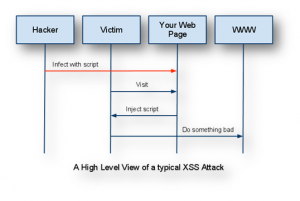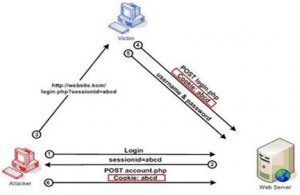5 PHP Security Measures to Implement

PHP is the most popular programming language and is being widely used for rapid development of dynamic websites. Web servers are publically accessible, so they possess possible security vulnerabilities.
PHP is a stable and almost an inexpensive web application platform. Like other web-based platforms, PHP is unsafe from external attacks too. For this, developers, database architects, and system administrators should take measurable precautions before deploying any PHP applications to a live server. These security techniques can get done with a few lines of code or some little adjustment to your application settings.
In this blog here, I have described in detail some of the most common vulnerability found in PHP web applications along with suggestions as for how they can be managed and prevented.
SQL Injection
SQL injection is the most common hacking type and specifically targets the database-driven websites or web applications which link or interacts with databases. The SQL injection is a type of code injection, where attackers make full use of the vulnerabilities in the website security measures to send special SQL queries to the database which can modify it and tables within it or delete the whole database.
Get free quote from professional PHP Development Company about your project.
This type of attack occurs when the developers fail to check data validation functionality in those areas of the website where the data from external sources can be inserted into the website. The attacker can easily add their own SQL statements in unprotected SQL queries which utilize data submitted by the user to check for something in the database.
For example:
An unprotected statement would be something like this
| 1 | $query = “SELECT * FROM users WHERE username = ‘niki’”; |
An SQL injection query will result in the following attempt:
| 1 | $query = “SELECT * FROM users WHERE username = ” or ’1=1′”; |
The result generated here will be true, and thus the content of entire table users would be displayed.
[related_posts]
In the SQL injection, attackers gains access to all the information in the database such as passwords, usernames, emails, and some other sensitive information.
How to prevent it?
- The data should be validated, verified and cleaned up before entering it into the application
- All the confidential information like passwords must be encrypted using SHA1 or SHA;
- Technical information has technical details which can disclose security vulnerabilities to an attacker; so for safety purpose, it should be removed from error messages;
- An attacker looks for error messages to hack information like database names, usernames and table names, therefore, disable error messages or create your own custom error messages;
- Limits the permissions granted on the database, since, fewer permissions will result in fewer chances of hacking attack;
- Use stored procedures and previously defined cursors to abstract data access so the users cannot directly access tables or views;
- Avoid using words such as ‘insert’, ‘update’, ‘drop’, and ‘union’ from being added to the database, as these all being words can alter tables and databases.
Remote File Inclusion and Remote Code Execution
The violation of this security measure will allow malicious or even unknown third party to run any code on the web server or on the client side and can even lead to other hacking attempts.
Remote file inclusion caused by a website susceptibility which lets the hackers to deploy malicious file on the web server. This can happen because of improper use of require() and include() functions if the register_globals directive, is ON, allowing the user to initialize variables remotely. These remote variables can be used to include malicious or unwanted files from remote locations, and if the allow_url_fopen is enabled in php.ini, then remote files can also be uploaded to the site’s server via FTP or HTTP from any remote location.
How to prevent it?
- Turn OFF the register_globals directive. Luckily, in advanced versions of PHP, it is by default OFF. If you want the directive to be ON for some reason, make sure all variables are properly initialized.
- There are some other PHP directives which can be used to avoid this security breach, which includes: allow_url_fopen (by default turned on) which controls whether to include remote files and should be turned OFF and allow_url_include (by default turned off) which controls whether include_once(), include(), require() and require_once() commands are able to include remote files into the code.
- Enabling safe_mode which tests user ID permissions before opening any file.
- Always validate user input and be careful with the data retrieved from remote servers or locations. To stop it, first, ensures that all files included are locally hosted and don’t ever accept files just like that unless necessary.
- Restrict user permissions to help you stay protected from this security threat.
Cross Side Scripting (XSS)
Cross Site Scripting is one of the most common forms of hacking Hackers use a legitimate site’s vulnerability to forcefully makes the site to do certain things. In XSS, the hacker infects a web page with the malicious client-side script and whenever a user visits that page, the script gets downloaded into the attacker’s browser and executed. The pattern of XSS attack is depicted in the diagram below:

How to prevent it?
- To stay protected from XSS, use escape functions, specially escape characters which comprises of HTML and JavaScript syntax like ‘>’ and ‘<’ or convert these into HTML entities, (for example, < would become this < ).
- Sites like forums, where users posts HTML links, an alternative syntax like bbcodes (this is so common on forums) and can be used in order to overcome the escaping of HTML characters.
- The htmlspecialchars () function identifies any output you do not want as a HTML output and converts it into plain HTML entities, for example: ‘&’ becomes ‘&’ and ‘”‘ (double quote) becomes ‘”’;
- Do always check and test the website before launching it.
Session & Cookie Hacking
The session and cookie hacking can’t violate the database or the web application itself, but it can affect user accounts. A session is an entity triggered when users establishes contact with any web server and consists of some period of interaction between users and web application which may be authenticated using security measures like a username and password. In all this session, the web application stores a cookie or file on the user’s’ browser, which contains information about the session such as users’ preferences, authentication data, unique codes or shopping cart information and more.

How to prevent it?
- To prevent hackers from setting session ID’s prior to login, ID’s must change after sometime, therefore, the session_regenerate_id() function must be used every time the user logs in, assigning them a fresh ID
- The risk can be minimized by revalidating a user who is going to perform important or sensitive tasks like resetting the passwords .
- If the user password is stored in a session variable, it should be encrypted by using the sha1() function.
- If the web application contains sensitive information like debit and credit card numbers, then using an SSL or any other secured connection to avoid session and cookie hacking
Directory / Path Traversal
Directory aka Path traversal is a method of destroying web applications by accessing the files from the document root directory which allows attackers to view restricted files and interact with the web server by executing commands. This hacking attacks happens from the browser and get done by entering URL into the address bar which helps to let out of the root directory and into the main server directories. This attack can also be done through input portals on the front end of the web application.
How to prevent it?
- Validate and clean all the user input and remove all the suspicious data and filter out metacharacters;
- Don’t ever store sensitive configuration files inside the web root.
- If a suspect request any file to made, build the full file-path and all the characters in the path should be normalized (e.g. change %20 to spaces);
- Careful programming on the web-server should be done. Make use of security software, patches and vulnerability scanners.
Security is an important phase in all the process. In this blog, I have mentioned here the top five PHP security measures to follow. Still got questions or need more information? Do comment below.
Latest posts by Moiz Khan (see all)
- How to Use AI to Enhance your SEO Strategies? - August 31, 2023
- What You Need to Know About Test Automation in DevOps - August 30, 2023
- 6 Cloud Computing Challenges That Businesses Need to Be Aware of - August 22, 2023

 Careers
Careers


